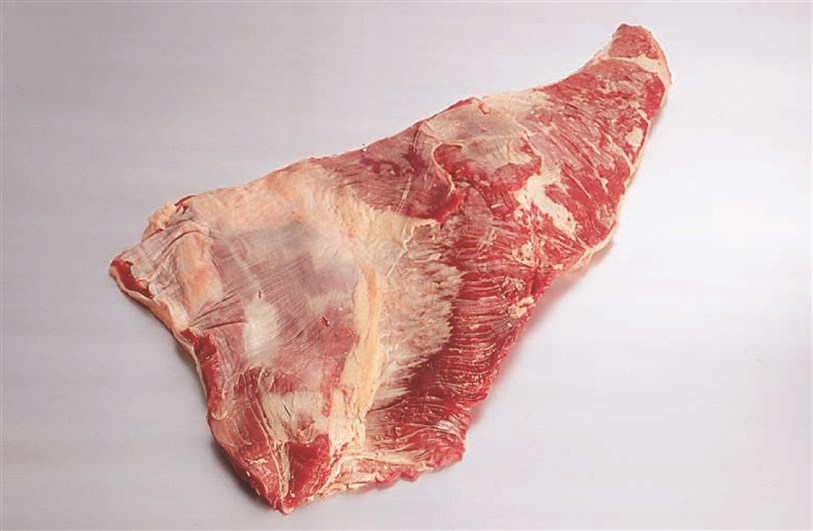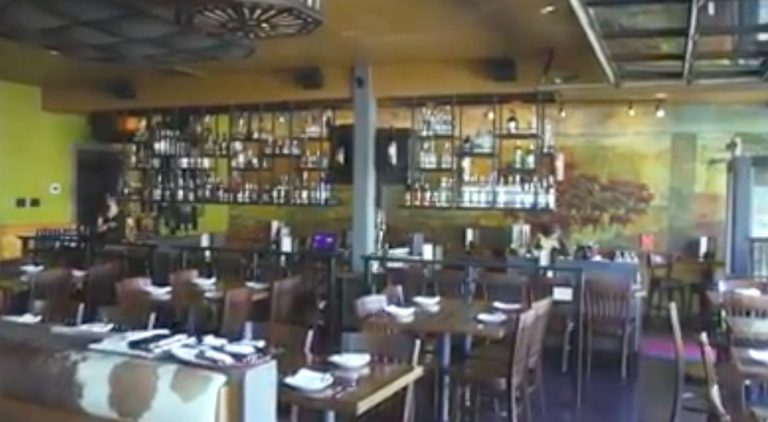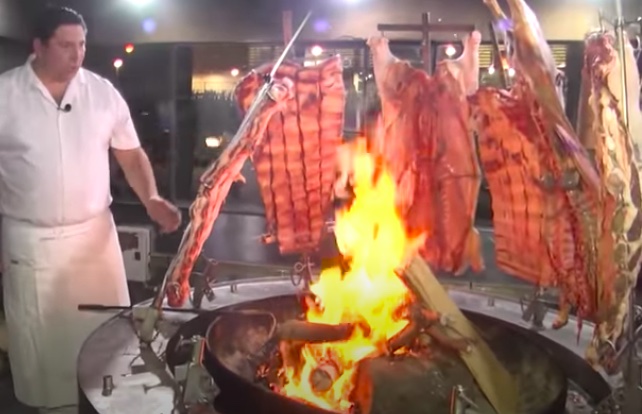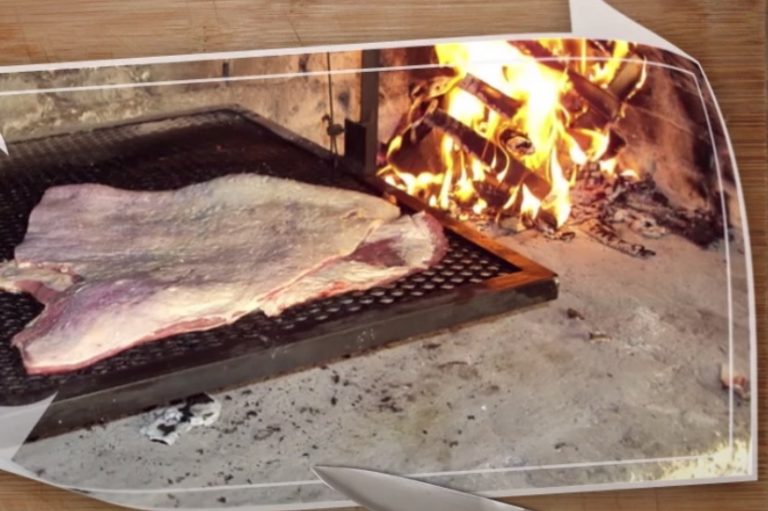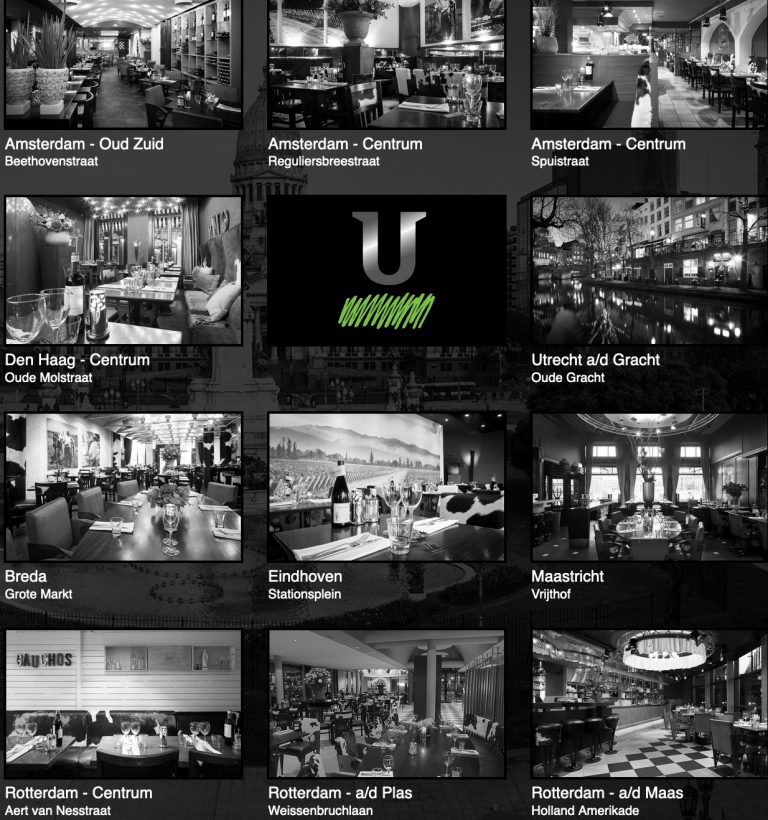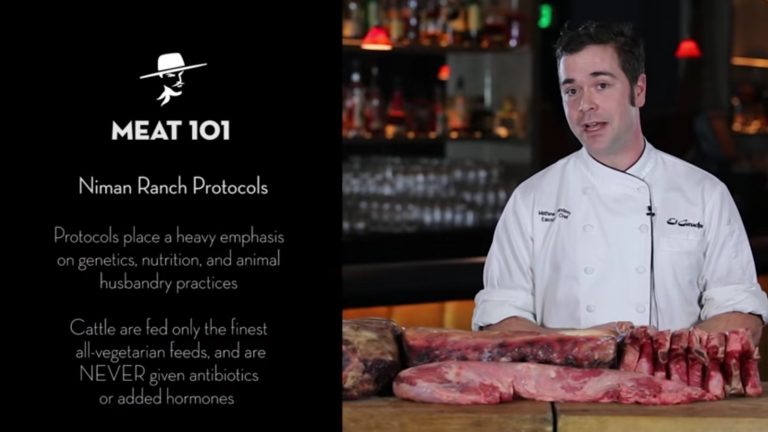Vacio is a must-have of every Argentinian Steakhouse. “Asado y vacio” is the answer you’ll hear when you ask what beef cuts they serve at a simple Argentine restaurant.
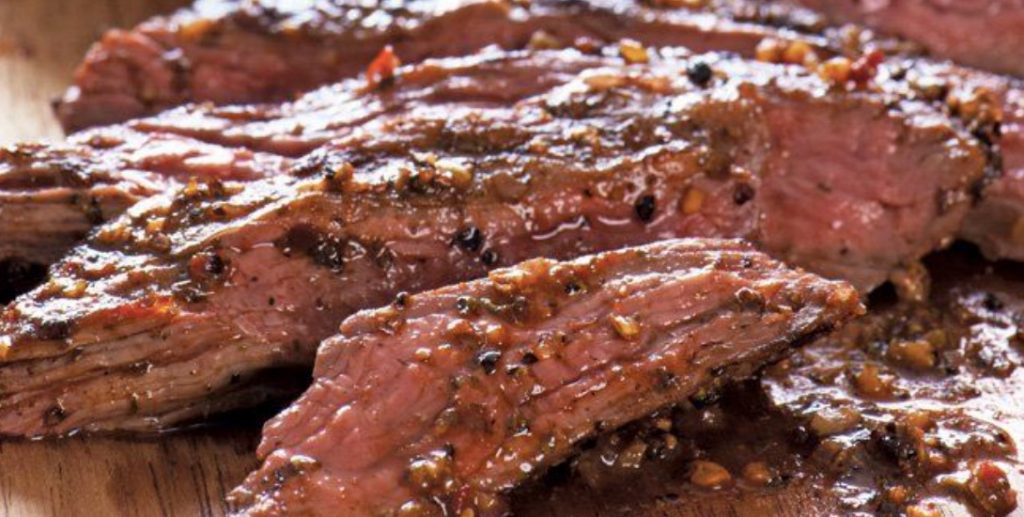
The vacio cut is the flank muscle around the belly of the animal. It is known also as flap meat because of the flap shape of the whole cut. It is the bottom of the sirloin, and the continuation of the rib cage in the posterior part of the heifer or steer.
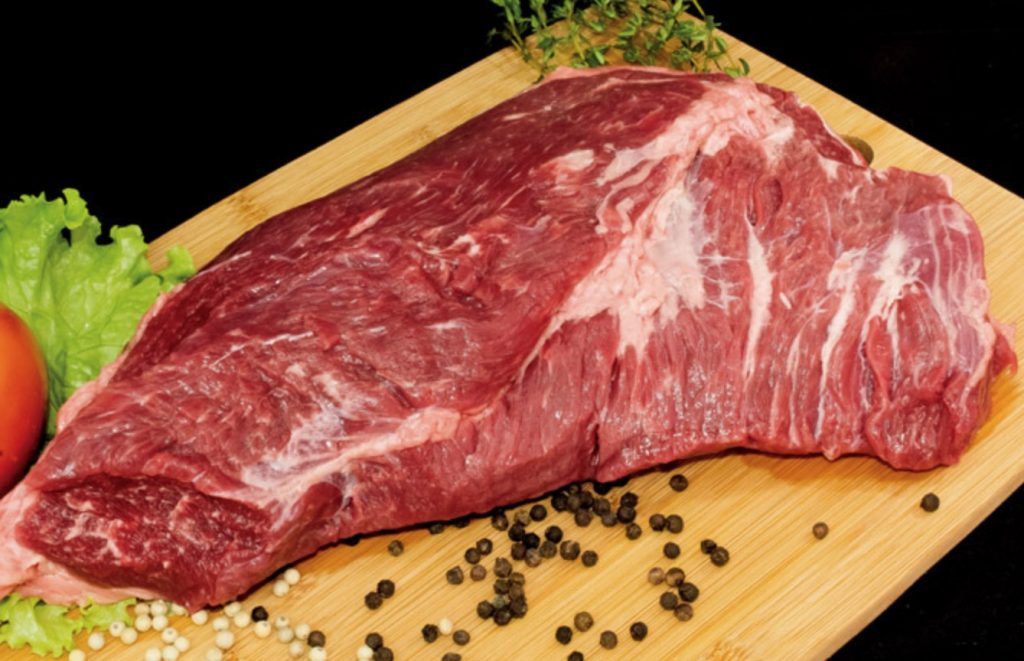
Vacío is also known in english as flap meat because the shape of the beef cut.
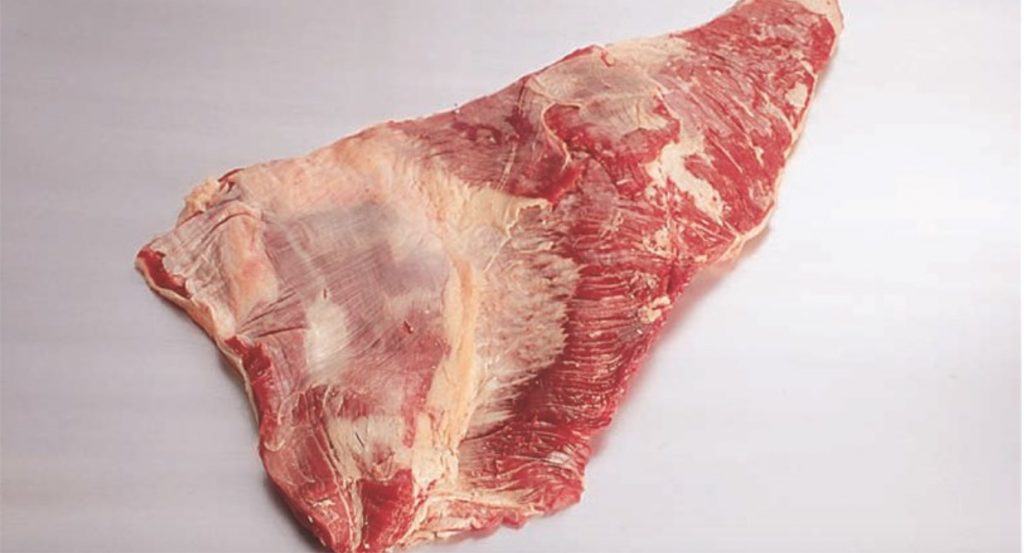
Asado Steakhouse
Asado Steakhouse is another very popular name for an Argentinian Steakhouse in the US and anywhere in the world. In this post we mention the Asado Steakhouse in East London and the renown Asado Steakhouse at Tacoma, near Seattle in the US. Asado Steakhouse Tacoma – Washington, USA Asado Steakhouse at Tacoma, near Seattle offers…
Entraña, the affordable and delicious skirt steak
Entrana Steak The entraña meat is a beef cut widely served in most Argentinian steakhouses, and also used in most meat restaurants around the world with different recipes and cooking techniques. The entraña tends to be an affordable and versatile beef cut, hence its growing popularity. The entrana steak is very easy to grill and…
More Argentine Steak Entraña, the affordable and delicious skirt steak
Asado Argentina
As discussed in this section’s home, Asado is a sacred word in Argentina. Asado in Argentina refers to both the beef cut, the delicious ribs of the plate or “costillar”, and the social event of gathering friends and and family nearby a wood fired or charcoal parrilla (grill). The asado in Argentina was traditionally cut…
Matambre: the elephant ear, twitch or fly shaker that is a must try cut at an Argentinian restaurant
Matambre is a must have beef cut at any argentinian steakhouse. However, it is rarely seen outside Argentina, or outside the Southern Cone of America, as Uruguayans, Paraguayans, Brazilians and Chileans also eat matambre. In the US, Matambre is called Rose Meat or Shoulder Rose Meat According to the USDA guidelines, as included in the…
El Gaucho Argentinian Steakhouse, most likely not an Argentine restaurant
El Gaucho is the most common name of an Argentinian Steakhouse outside Argentina. Referring to the Gaucho, the Argentinian cowboy, El Gaucho names thousands of Argentinian food restaurants in the world, almost exlusively owned and run by non Argentinians. Many of them are already chains of many El Gaucho “parrillas”, the name of Argentinian steakhouses…
More Argentine Steak El Gaucho Argentinian Steakhouse, most likely not an Argentine restaurant
El Gaucho, Seattle, not Argentinian steakhouse
Despite its Argentinian name, El Gaucho steakhouse, at Seattle Washington, is not an Argentine grill. All the beef is 100% American, including not only the meat and the way to cut it. You won’t find any tira de asado, vacío o chinchulines at El Gaucho in Seattle. El Gaucho is the most common Argentinian steakhouse…
More Argentine Steak El Gaucho, Seattle, not Argentinian steakhouse
Vacío Meat Cut outside Argentina
The vacío meat cut, is also very popular in France, where it is called bavette and served at many bistrots with “frites”.
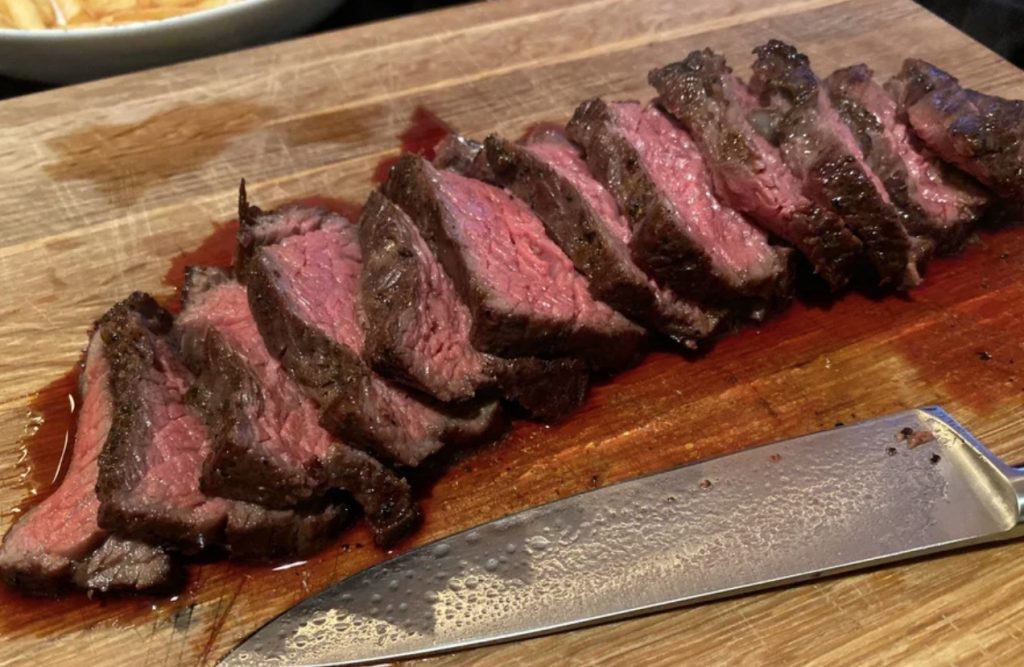
The vacio is well marbled, and has firm fiber with a well defined grain, as the muscles of the belly of the cow are subject to substantial effort. Because of not being that tender it was underestimated in the era of tasteless filet mignon. Now, because of its flavor and its fat, it is rediscovered as one the best Argentinan beef cuts.
Vacío Steak
The vacio outside Argentina, especially in the US, is normally cut into steaks and cooked on pans on high heat. and served as a vacío steak. However, at a true Argentinian steakhouse, the vacio has to be grilled in one single piece (over 2 kg of weight) on the wood fired or charcoal parrilla. It is a lot better to grill the full cut if you plan to slow cook it Argentinian style so it does not losses the juice inside.
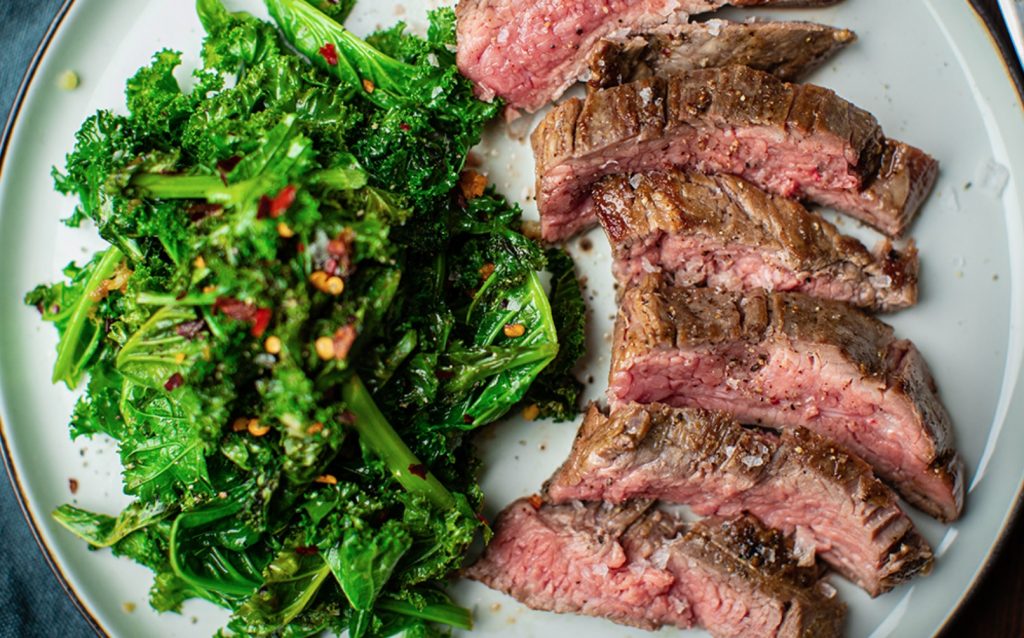
Vacio is a very versatile beef cut. Apart from the traditional Argentinian vacio a la parrilla, you can also roast it in the oven. The vacio al horno is also a very popular dish in Argentina, especially in Buenos Aires where people live in apartments with no barbecue place. It is also very popular in lunch menus in Buenos Aires fondas and bodegones. The Fonda or Bodegon is a very basic and affordable Argentine restaurant that offers traditional Argentine food like roasted beef cuts, ravioli, ñoquis, fideos al tuco (vermicelli with tomato sauce) and other staples of the Argentine cuisine.
Vacío beef cut price keeps on delivering good news: it is affordable
In Argentina, the vacío is a non expensive beef cut. It is considered a key part of the “cortes parrilleros”, the set of beef cuts that are traditionally grilled at parrillas by locals. The other “cortes parrilleros” are “tira de asado” (rib cage, short ribs), “matambre” (fly shaker meat, rose meat or elephant ear cut) and the “entraña” (skirt steak, both inside and outside).
In Argentina, these cortes parrilleros do not drive any export demand, so 100% of vacíos are kept inside the country for domestic consumption. Argentina’s most valued export cuts are those located on the rump & loin of the cow, and the steaks, that are exported to Europe as part of the Hilton Quota (a special customs regime with low tariffs for high value beef cuts).
How much does the vacio beef cut costs?
In Argentina it is hard to give an estimate of the vacio beef cut price due to the many macroeconomic crisis and inflations the country has experienced over the last 50 years.
However, the cost of a vacio cut has always been around $5-7 per kilo, that would be only $ 2.72 per Lb, less what chicken costs in the US or in Europe.
As shown in the image below, a cut of vacio at Wholefoods supermarkets is woth $18lb, or $39 per kilo. Due to the prevailing crisis in Argentina (q4 2020), a kilo of vacío beef in Argentina now is worth $3/kg, or just $1.32/lbs, a ridiculous price.
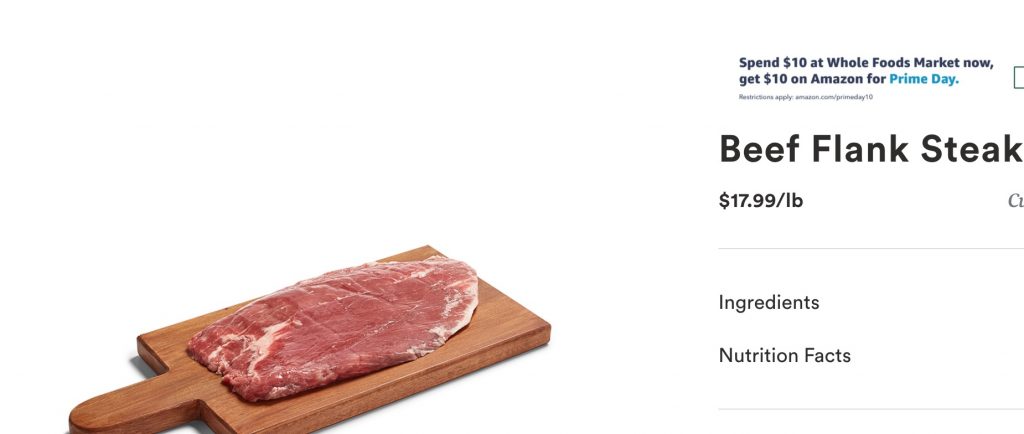
Vacio Argentine beef cut nomenclator description
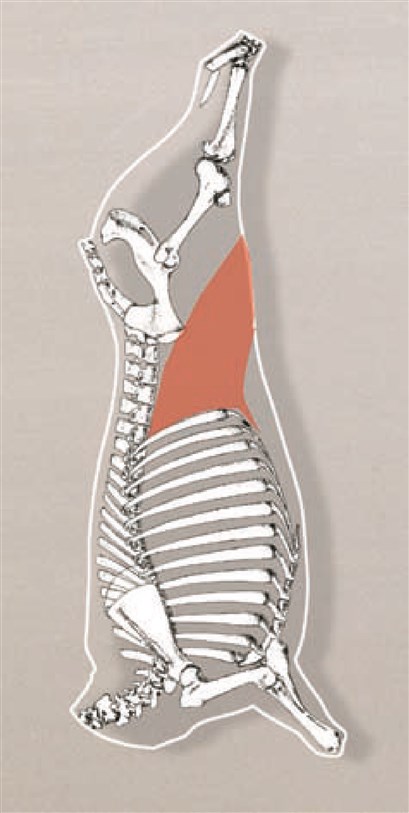
The vacio beef cut is made of the following abdominal muscles: transversus abdominis internal and external oblique muscles and the rectus abnominis.
It is the continuation of the tiras de asado (ribs) train, and precedes the Tri-Tip, Rump tail, Sirloin Roast. Is is just below the Sirloin/New York area.
Vacío (Code 2469 and 2200) Está ubicado en la región abdominal, y lo integran los músculos y fascias que componen la pared abdominal. Tiene por límite en su parte anterior al asado y la falda, en la superior a los bifes angostos y en la posterior a la colita de cuadril.Composición Osea:
Official Argentine beef cut Nomeclator SENASA IPCVA
DEBE CONSIDERARSE COMO BASE ÓSEA A LOS PUNTOS DE INSERCIÓN DE LOS MÚSCULOS ABDOMINALES, YA SEA DIRECTA O INDIRECTAMENTE POR INTERMEDIO DE TENDONES O FASCIAS. TENEMOS ENTONCES: LA CARA EXTERNA Y CARTÍLAGOS COSTALES DE LAS ÚLTIMAS COSTILLAS, APÓFISIS TRANSVERSAS DE LAS VÉRTEBRAS LUMBARES, EL CUERPO DEL ILIÓN, LA TUBEROSIDAD COXAL Y EL PUBIS. Componente Muscular:
COMPRENDE LOS MÚSCULOS Y FASCIAS QUE CONTRIBUYEN A FORMAR LA PARED DEL ABDOMEN. ESTOS MÚSCULOS SON: OBLÍCUO ABDOMINAL EXTERNO, OBLÍCUO ABDOMINAL INTERNO, RECTO ABDOMINAL Y ABDOMINAL TRANSVERSO. Preparación:
SE PUEDE PREPARAR A PARTIR DE UN CUARTO TRASERO A 3 COSTILLAS. PREVIA EXTRACCIÓN DEL MATAMBRE, SE LO SEPARA DE LA COLITA DE CUADRIL INCIDIENDO A TRAVÉS DEL TEJIDO CONJUNTIVO QUE VINCULA LOS MÚSCULOS ABDOMINALES CON EL TENSOR DE LA FASCIA LATA, HASTA LLEGAR AL LÍMITE VENTRAL DEL BIFE ANGOSTO. A CONTINUACIÓN, SE COMPLETA EL CORTE EN SENTIDO PARALELO AL BORDE DEL BIFE ANGOSTO HASTA LLEGAR A LA 13º COSTILLA, LA QUE SE BORDEA HACIA VENTRAL HASTA LOGRAR LA SEPARACIÓN DE LA PIEZA. FINALMENTE, SE ELIMINAN LOS EXCESOS DE TEJIDOS CONJUNTIVO Y ADIPOSO.
In the video below, from the minute 5.25 you can see how the flank steak is cut from the loin of the steer.
